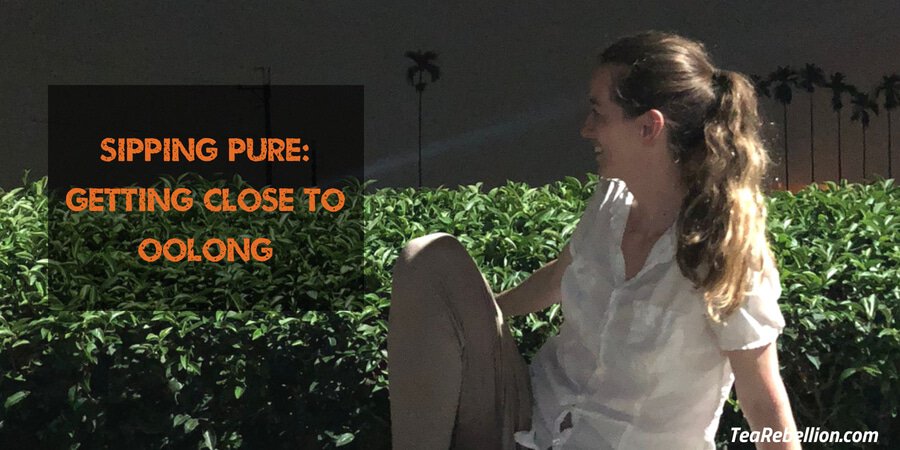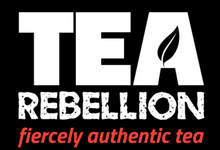
Sipping Pure: Getting Close to Oolong
Curious to know how our founder, Annabel, spent her time learning about all things Oolong with Jhentea in Yilan County, Taiwan?
Yilan County, Taiwan, is the most famous for Oolong production. However, it is increasingly produced in other countries as well (we carry lovely Oolongs from Malawi and Indonesia). Many jokes abound when it comes to Oolong, such as “Move Oolong” and “Can’t we all just get Oolong”. However, making Oolong is NO joke! Those who produce this tea undergo very strenuous work and are considered “tea masters”. Tea Rebellion feels incredibly honoured and privileged to have learned first-hand about the art and challenges of making authentic Oolong through our partner farm, Jhentea.
Before we dive into tea, a little bit on traveling to and within Taiwan…
First of all, Taiwan must have been the quickest and easiest country to visit as a German passport holder. How so? Well, with only a completed landing card and a visa waiver program, the border was a breeze. No questions asked or additional border interrogation…Wow! What an amazing welcome.
I then proceeded to the local fast train (MTR), which was amazingly clean, modern and spacious. Within 40 minutes or so, I was in the city centre. This is when traveling as a “non-Asian language speaker” got challenging. I had instructions on how to find the bus station to Jilan country (where Jhentea is based), however I did get a bit lost. Eventually, one bus driver gave me a ticket with four characters on it and asked me to follow the characters… I eventually got there.
Upon arrival, I had to wait 15 minutes and guess what happened next? I was served tea. Yes, that’s right… at a completely public and open space, the bus attendants and ticket controllers served me and others’ a cup of tea with crackers. As someone who runs a tea venture I thought, “Wow I have arrived”. This is tea country – and even better its Oolong country.
A hour bus ride later, I arrived to my destination…
I arrived on a street in Jilan where the tea shops are lined up right next to another and yet they are all unique in history and philosophy. Jhentea’s philosophy and design is modern, pure, and beautiful with lots of natural materials and the operation is run entirely by women. Jhentea is a fourth-generation tea making business. Fu Cheng and her daughter, Ai Fang, jointly lead the business and the wider family is strongly involved as well. The second daughter, Fang, leads relationships with North American partners, while Ai’s daughter organizes tea tours for visitors just like me.
Upon arrival, we very quickly placed ourselves around the Gaiwan, which is the centre of the Taiwanese tea salon.

Gathered there we tasted, in short subsequent steeps, several recently made Oolongs from different altitudes and quality levels. Variety, altitude, timing and skill are all key ingredients in making Oolong.
Oolong factors and their importance:
Varieties: Several Oolong varieties exist in Taiwan. Ti Guanin is an old and strong variety that is beloved in Yilan County and by Jhentea. Forever Spring is another, which flowers often and allows for many harvests. Various regions in Taiwan specialize in and grow different varieties.
Altitude: Altitude is important for tea flavor. In Oolong, the sense of quality and rarity is much correlated with altitude. Anything above 1,000 is considered a high mountain Oolong. The lowest grown teas are harvested more frequently, while those in higher altitude (from 1,600m Alishan Oolong and then from 1800m and even 2600m even more rare Oolongs) only usually have two harvesting periods.
Season: Season affects the characteristic of tea. Summer harvest has the highest caffeine, spring harvest the highest tannins, and fall harvest the strongest fragrance.
In addition to harvesting the right leaves (two leaves and a bud, without side shoots), the process of making Oolong involves a few critical steps:
1. Wilting: The key is to closely observe how the water is draining the leaves (called wilting) and to decide on the right time to fire the leaves, or “kill green”. Initially, the leaves have a water content of 55-85% and need to reduce to 3-5% water content. In Yilan County, fresh leaves are laid out on big baskets and stored on shelves

The leaves also oxidize during this step while the water evaporates. I asked Ai how she knows when the time has come to stop the oxidization (“the crucial quality point”) and she responded that, frankly, it’s the smell of the leaves. Given her experience of tea making for 40 years, she can simply tell when the leaves are ready.
2. Firing: When the leaves are deemed ready, the next step is oven firing at about 300 degrees celsius. The flames, aroma and steam coming out of these ovens are amazing. Timing, temperature and all other settings are automatically set to control the process.
3. Rolling: Next up, the leaves are rolled in order to shape them into an elongated and slightly twisted form. This facilitates the post drying rolling into the typical Oolong pearl shape.
4. Drying: The leaves are then dried, usually 3 times until the remaining water is properly sealed in and the humidity level is down to 3-5%, which is required for packaging and transport.
5. Rolling: This step is where the dried leaves are rolled in cotton cloths, bundled and pressed until they turn into the distinctive Oolong pearls that only open slowly and protect the leaves from damage.
Jhentea believes in purity.
The Jhentea motto is “sip pure”. Yilan County’s Oolong making climate is increasingly challenging because of the current trends in varieties and practices. These varieties and practices generate either leaf sweetness, or encourage adding artificial flavouring. Why? Bubble Tea is one reason. The 30 year old Taiwanese invention of iced tea with flavour, milk and tapioca is a manifestation of this trend. As a result, the Taiwanese government actively promotes the use of organic fertilizer that produces a sweeter tasting leaf type side-effect. Sweetness in tea is favoured at the countrywide Oolong tea competitions, as a result, Jhentea chooses not to participate. Instead, they produce teas that are in line with their philosophy to, “sip pure”.
I asked Ai what she loves about tea making…
Ai is passionate about the creative process of designing teas. Each design offers a new and different challenge due to constantly changing conditions. Growing up, helping with the family tea business felt like an obligation. However, this completely changed when she discovered her ability to make a unique tea. A tea special enough to fit a particular leaf and customer. Ai’s approach to tea making is highly spiritual. The Gaiwanese steeping is done in a simple, not overly, ceremonial way. Purity and peace is sought in the act of drinking tea, which is something we all want!
Jhentea works with 3-4 different regions and farmers…
These farmers are long-standing friends and partners. Ai can trust that they are not using agrochemicals, nor any organic taste enhancing fertilizers. Jhentea is closely involved in the growing of the leaves and travels to each of the farms to not only be present at harvest, but also during each step of the tea growing process.
I am leaving Taiwan highly inspired by these powerful and outstanding female tea makers. There is so much to learn from Jhentea and Taiwanese culture. I bonded with the humbleness, spirituality and peace that is lived through the tea culture. It appeared unique and in contrast to the highly ceremonial tea cultures in other Asian countries. More of this anytime!
